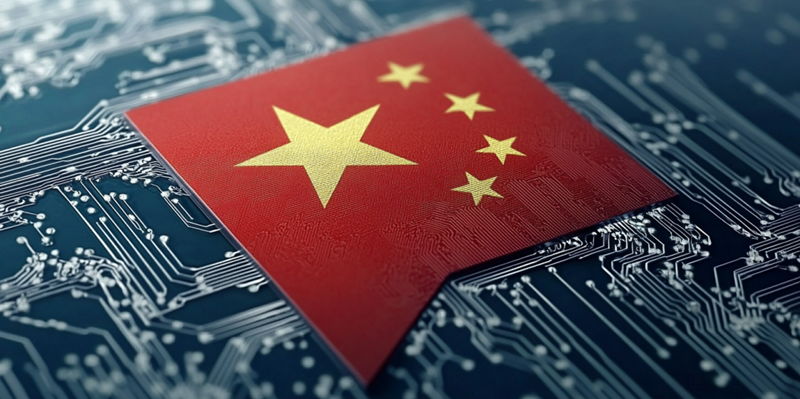In a significant move to counter cybersecurity threats, the US government has imposed sanctions on the Chinese cybersecurity firm Sichuan Silence Information Technology Company, Limited (Sichuan Silence) and its employee Guan Tianfeng. This action follows their involvement in a massive firewall breach in April 2020, exploiting a zero-day vulnerability (CVE 2020-12271) to deploy malware and ransomware worldwide. Over 23,000 firewalls in the United States were compromised, including 36 within critical infrastructure sectors. This breach raises alarming questions about the security of vital national systems and underlines the urgent need for robust cybersecurity measures.
Breach and Exploitation of Zero-Day Vulnerability
Global Consequences and Sensitive Data Theft
The 2020 breach orchestrated by Sichuan Silence and Guan Tianfeng had far-reaching implications, affecting over 23,000 firewalls globally. The attackers exploited a zero-day vulnerability identified as CVE 2020-12271 to infiltrate these systems, securing them with the Asnarök Trojan. This malicious software enabled the cybercriminals to steal an array of sensitive data, including usernames and passwords, putting countless organizations at risk of data theft and unauthorized access. The situation was further exacerbated by attempts to install the Ragnarok ransomware, which, if fully executed, could have resulted in severe operational disruptions and financial losses for the affected entities.
The compromised systems included critical infrastructure in the United States, highlighting the potential for catastrophic consequences. In particular, energy companies were at significant risk, with possible operational failures leading to safety hazards and human injury or loss of life. The sheer scale of this breach and the sensitivity of the targeted data underscore the sophisticated nature of the cyber threat posed by groups such as Sichuan Silence. This incident not only emphasizes the vulnerabilities inherent in perimeter devices but also the critical need for continuous vigilance and advanced defense mechanisms to mitigate such threats.
Impact on US Critical Infrastructure
The breach had a particularly profound impact on US critical infrastructure, which includes essential sectors such as energy, water supply, transportation, and healthcare. The infiltration of these systems could have led to widespread operational failures, disrupting services that millions of Americans depend on daily. The potential for such disruptions posed serious risks to public safety and national security, demonstrating the crucial importance of protecting these systems from advanced cyber threats.
Efforts to install the Ragnarok ransomware within these critical systems were especially concerning. Had the ransomware been successfully deployed, it could have encrypted valuable data, rendering it inaccessible to the organizations relying on it for daily operations. The resulting chaos could have hindered the ability of energy companies to supply power, hospitals to provide medical care, and transportation networks to function effectively. This scenario underscores the necessity for robust cybersecurity measures that can anticipate and counteract such sophisticated attacks.
Response from US Authorities
OFAC Sanctions and Rewards
In response to the breach, the US Office of Foreign Assets Control (OFAC) enacted stringent sanctions against Sichuan Silence and Guan Tianfeng. These sanctions necessitate the blocking and reporting of any US-based assets belonging to the firm or Guan, aiming to disrupt their financial operations and limit their ability to further engage in illicit cyber activities. This decisive action reflects the seriousness with which the US government approaches such cybersecurity threats and its commitment to safeguarding national security.
Additionally, the US Department of State has heightened its efforts to gather more information on Sichuan Silence and Guan by offering a substantial reward. A $10 million bounty has been announced for any information that could lead to the arrest or conviction of those involved in the breach. This approach serves to incentivize cooperation from the global community in the fight against cybercrime and underscores the collaborative nature of modern cybersecurity efforts.
Broader Trends and Investigations
A broader trend of Chinese threat actors targeting perimeter devices has been identified, posing significant risks to various organizations, including US government agencies and critical infrastructure firms. Over the past five years, an investigation by cybersecurity firm Sophos has tracked these continuous campaigns, known as ‘Pacific Rim,’ in which China-based groups have exploited vulnerabilities in perimeter devices from 2018 to 2023. This persistent threat has necessitated ongoing monitoring and innovative countermeasures to protect critical systems from advanced, coordinated attacks.
Ross McKerchar, the Chief Information Security Officer (CISO) at Sophos, expressed support for OFAC’s actions and emphasized the importance of innovative and collaborative efforts to counter the determined threat from PRC groups. He highlighted the need for early transparency about vulnerabilities and the development of robust software that can outpace these adversaries. McKerchar’s insights underscore the dynamic and evolving landscape of cybersecurity, where constant vigilance and proactive measures are essential to mitigating risks and ensuring the resilience of critical infrastructure.
Conclusion and Future Steps
In a significant move to address cybersecurity threats, the US government has imposed stringent sanctions on Sichuan Silence Information Technology Company, Limited, a Chinese cybersecurity firm, as well as its employee, Guan Tianfeng. This decisive action was taken following the company’s involvement in a major breach that occurred in April 2020. During this breach, the firm exploited a zero-day vulnerability identified as CVE 2020-12271, enabling them to deploy malware and ransomware on a global scale. The breach compromised over 23,000 firewalls in the United States alone, with 36 of these firewalls being within critical infrastructure sectors such as energy, healthcare, and finance. This incident has raised serious concerns about the security of the nation’s essential systems, highlighting the urgent need for more robust and stringent cybersecurity measures to protect vital assets. The sanctions serve as a critical reminder of the importance of safeguarding digital infrastructures against increasingly sophisticated cyber threats.

